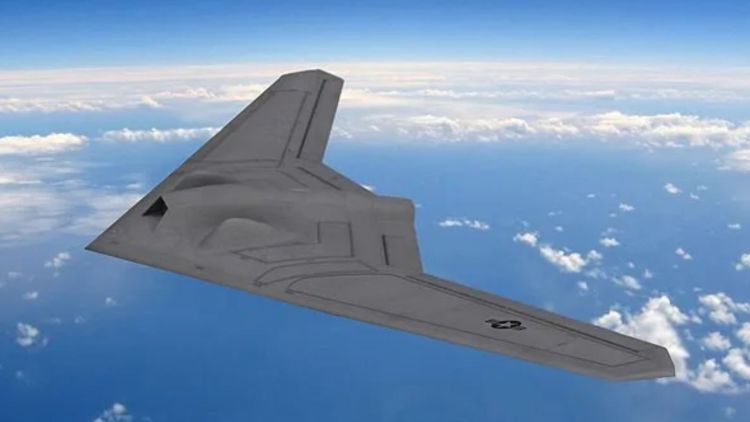The following article first appeared on Warrior Maven, a Military Content Group member website.
The sleek, bat-like RQ-170 Sentinel is, quite paradoxically, secret and well known at the same time, as it is an advanced, stealthy reconnaissance drone known to have successfully performed combat missions. Given the success of the platform as a reconnaissance and surveillance asset, and its advanced stealth technology, is it conceivable that the Pentagon might seek to arm the drone? The existing configuration was likely engineered for maximum stealth, meaning horizontal blended wing-body thin fuselage, yet could it be re-engineered with an internal weapons bay to add an “attack” dimension to its mission envelope.
Of course, the U.S. operates several strike drones, such as the less-stealthy Reaper, yet available info thus far on the stealthy RQ-170 suggests it is unarmed. It can be difficult to optimize a blend of what might be tough to combine characteristics, as weapons pylons or weight and size-adding internal weapons bays can make the engineering of a super stealthy platform more challenging. The current Air Force fact sheet on the RQ-170 describes it as purely a reconnaissance platform for targeting, yet it seems realistic that the body could be reconfigured with the requisite computing and fire control sufficient to fire weapons.
While the U.S. is pursuing a stealthy armed “long-shot” attack drone with DARPA and industry, the RQ-170 is not armed, and platforms such as the B-2 are, of course, manned. DARPA’s emerging Long Shot drone, for example, is now being configured to fire air-to-air missiles, yet that is a new design that may operate in small groups. Therefore, there are potentially unique advantages to developing a larger, stealthy Sentinel-like drone armed with missiles, as this would reduce sensor-to-shooter time. Latency would be reduced once targets were identified, and advanced networking technologies could likely connect the drone with airborne human command and control in position to quickly make decisions about the use of lethal force. Reconnaissance and targeting, particularly when it comes to enemy air defenses, is extremely critical in a high-end combat zone against a sophisticated adversary.

China’s GJ-11
China is well known to operate a stealthy armed GJ-11 attack drone, and several years ago, a Chinese paper specifically said the GJ-11 configuration resembles a “flying wing design similar to the US’ B-2 strategic bomber.” This is by no means a surprise, as China has a well-known and documented history of designing what appears to look like U.S. design copycat efforts or rip-offs.
GJ-11 Stealthy Attack Drone Missiles
Will the new GJ-11 Chinese platform fire HELLFIRE-like air-to-ground precision missiles? Or even drop glide bombs? The specific weapons characteristics are not likely to be available, however a Chinese government backed newspaper says the drone is built with two internal weapons bays, each with four bomb locations.
Perhaps most of all, the existence of the GJ-11 attack drone raises an interesting question about the maturity of Chinese stealthy attack on air defenses as well as manned-unmanned teaming.
The following article first appeared on Warrior Maven, a Military Content Group member website.
The sleek, bat-like RQ-170 Sentinel is, quite paradoxically, secret and well known at the same time, as it is an advanced, stealthy reconnaissance drone known to have successfully performed combat missions. Given the success of the platform as a reconnaissance and surveillance asset, and its advanced stealth technology, is it conceivable that the Pentagon might seek to arm the drone? The existing configuration was likely engineered for maximum stealth, meaning horizontal blended wing-body thin fuselage, yet could it be re-engineered with an internal weapons bay to add an “attack” dimension to its mission envelope.
Of course, the U.S. operates several strike drones, such as the less-stealthy Reaper, yet available info thus far on the stealthy RQ-170 suggests it is unarmed. It can be difficult to optimize a blend of what might be tough to combine characteristics, as weapons pylons or weight and size-adding internal weapons bays can make the engineering of a super stealthy platform more challenging. The current Air Force fact sheet on the RQ-170 describes it as purely a reconnaissance platform for targeting, yet it seems realistic that the body could be reconfigured with the requisite computing and fire control sufficient to fire weapons.
While the U.S. is pursuing a stealthy armed “long-shot” attack drone with DARPA and industry, the RQ-170 is not armed, and platforms such as the B-2 are, of course, manned. DARPA’s emerging Long Shot drone, for example, is now being configured to fire air-to-air missiles, yet that is a new design that may operate in small groups. Therefore, there are potentially unique advantages to developing a larger, stealthy Sentinel-like drone armed with missiles, as this would reduce sensor-to-shooter time. Latency would be reduced once targets were identified, and advanced networking technologies could likely connect the drone with airborne human command and control in position to quickly make decisions about the use of lethal force. Reconnaissance and targeting, particularly when it comes to enemy air defenses, is extremely critical in a high-end combat zone against a sophisticated adversary.

China’s GJ-11
China is well known to operate a stealthy armed GJ-11 attack drone, and several years ago, a Chinese paper specifically said the GJ-11 configuration resembles a “flying wing design similar to the US’ B-2 strategic bomber.” This is by no means a surprise, as China has a well-known and documented history of designing what appears to look like U.S. design copycat efforts or rip-offs.
GJ-11 Stealthy Attack Drone Missiles
Will the new GJ-11 Chinese platform fire HELLFIRE-like air-to-ground precision missiles? Or even drop glide bombs? The specific weapons characteristics are not likely to be available, however a Chinese government backed newspaper says the drone is built with two internal weapons bays, each with four bomb locations.
Perhaps most of all, the existence of the GJ-11 attack drone raises an interesting question about the maturity of Chinese stealthy attack on air defenses as well as manned-unmanned teaming.
Loyal Wingman Drone Concept
For many years now, for instance, the U.S. Air Force and its research lab have been working intensely to develop the “loyal wingman” concept wherein a manned aircraft controls a nearby drone from the cockpit. This of course reduces latency, improves survivability and standoff range for manned pilots and streamlines attack options for aircraft operating above hostile territory.
A stealthy attack drone, as opposed to less-stealthy U.S. Gray Eagles and Shadow drones controlled by nearby Apache helicopters, certainly may multiply attack options against advanced air defenses while keeping manned jets out of reach from ground fire.
The U.S. is already having great success moving its “loyal wingman” concept toward operation with its Valkyrie drone which has flown alongside manned fighter jets in U.S. Air Force demonstrations.
F-22 & F-35 Drone Manned-Unmanned Teaming
The Air Force has fast been making progress developing the kind of scenario wherein a 5th-generation fighter such as an F-22 or F-35 could control drones in real time from the cockpit, controlling both the flight path trajectory as well as the sensor payload. The operational capacity is fast-approaching for the U.S. Air Force and has already been demonstrated by the Air Force Research Laboratory with its Valkyrie drone and an F-35.
To what extent is China able to replicate this? Are they able to replicate it with a stealthy attack drone? The existence of a drone such as this, especially if it exists in large numbers, introduces new dimensions to stealth attack as it could take on the most high-risk attack missions without putting pilots at risk.




